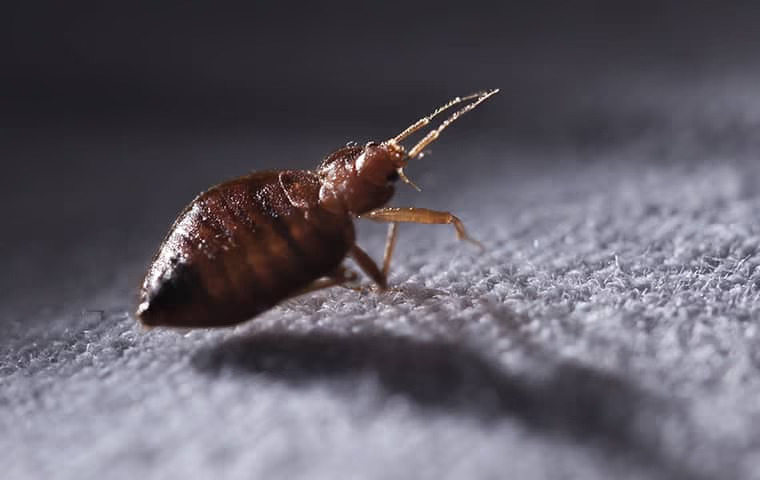Types of Parasite Control: Which Approach Is Right for Your Invasion?
When confronted with an insect infestation, the option of an ideal technique for insect control is vital in successfully handling the situation. From chemical treatments to organic options, there exists a series of techniques that can be utilized to attend to different kinds of insects. Each method features its very own set of advantages and considerations, making the decision-making process a nuanced one. Understanding the subtleties of each method and evaluating their compatibility with the certain pest problem available is vital for achieving long-lasting success in pest monitoring. By checking out the different sorts of bug control methods offered, individuals can make educated decisions customized to their unique scenarios, ensuring an extra sustainable and reliable end result in pest removal.
Chemical Pest Control
Chemical insect control includes using synthetic or naturally derived chemicals to handle and remove pest populaces effectively. This technique is typically made use of in farming, forestry, and household setups to combat a variety of bugs, including weeds, rats, and insects. The usage of chemical pesticides can provide fast and targeted options to pest problems, making it a preferred selection for several people and services.
Among the essential advantages of chemical insect control is its ability to promptly eliminate pests, reducing the risk of damages to plants, home, and human health. By making use of details chemicals that target specific insects, this method can effectively manage invasions while lessening damage to advantageous microorganisms and the setting when used properly.
Nevertheless, using chemical insect control also raises problems regarding potential damaging impacts on non-target types, water resources, and human health. It is essential to adhere to security standards, apply chemicals responsibly, and take into consideration alternate parasite control techniques to minimize these dangers and make certain sustainable parasite administration techniques.
Biological Parasite Control
Organic pest control, also understood as biocontrol, uses living microorganisms to reduce and handle insect populations normally. By utilizing the bug's all-natural killers or pathogens, biological pest control offers a lasting and ecologically friendly service to pest administration.

Mechanical Insect Control
Using physical and manual methods to take care of insect populaces, mechanical pest control offers a different technique that does not depend on the use of living microorganisms or synthetic chemicals. This approach includes making use of barriers, catches, or other gadgets to literally prevent or get rid of bugs. By obstructing bug entry factors or establishing up traps to capture them, mechanical insect control can efficiently decrease invasions without presenting chemicals into the setting.
One common example of mechanical bug control is the usage of mesh screens on doors and home windows to avoid bugs from getting in structures. This basic yet effective technique works as a physical barrier, keeping insects out while enabling proper ventilation. Furthermore, tools like mousetraps, fly swatters, and ultrasonic repellents drop under the mechanical pest control category.
While mechanical insect control approaches can be labor-intensive and require regular tracking and maintenance, they use a lasting and eco friendly service for managing insect infestations. By combining different mechanical techniques, residential or commercial property owners can produce an extensive parasite control strategy that minimizes reliance at pest control on chemical pesticides.
Physical Pest Control

Some usual physical parasite control techniques consist of using obstacles such as displays or internet to avoid parasite entry, traps to record and remove bugs, and hand-picking to literally remove parasites from plants or structures. In addition, methods like warmth treatments can be utilized to regulate pests like bed pests by increasing the temperature to levels that are dangerous to the insects.
Physical parasite control is particularly useful in incorporated bug monitoring (IPM) approaches, where numerous insect control approaches are combined for efficient bug monitoring while decreasing the use of chemicals. By making use of physical parasite control techniques, individuals can successfully resolve parasite infestations with very little ecological influence.
Integrated Parasite Monitoring
When implementing physical pest control methods as component of insect administration methods, Integrated Bug Administration (IPM) becomes a comprehensive method that leverages different techniques to effectively control pest populaces. IPM focuses on lasting avoidance of pests through a mix of organic, social, physical, and chemical tools tailored to particular insect issues. By integrating numerous control methods, IPM intends to decrease the threats related to bugs while likewise minimizing reliance on chemical solutions.
One secret facet of IPM is the focus on tracking and evaluating pest populations to establish one of the most suitable control techniques. This positive approach permits for very early intervention and targeted approaches, leading to extra reliable bug administration. Additionally, IPM advertises eco-friendly methods by visit their website prioritizing non-chemical control methods and just utilizing chemicals as a last option.
Conclusion

By using the parasite's natural killers or microorganisms, biological bug control provides a environmentally friendly and sustainable option to pest management. - Kings cincinnati pest control
Utilizing physical and hands-on approaches to manage insect populaces, mechanical pest control offers an alternative technique that does not depend on the usage of living organisms or synthetic chemicals.A reliable strategy to managing parasite populaces without counting on chemical or organic techniques entails the use of physical pest control techniques.When carrying out physical insect control techniques as part of bug administration methods, Integrated Parasite Monitoring (IPM) arises as a detailed method that leverages different strategies to efficiently manage pest populaces. Chemical bug control involves the use of chemicals, biological parasite control uses all-natural predators, mechanical pest control includes physical obstacles, physical parasite control consists of capturing or getting rid of bugs, and incorporated pest management combines multiple techniques for a holistic strategy to pest control.